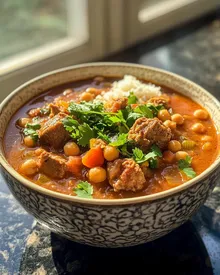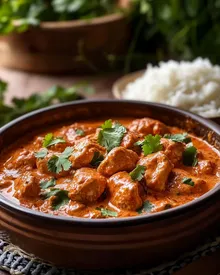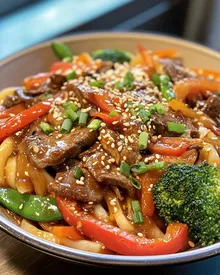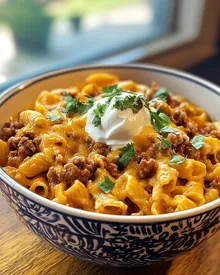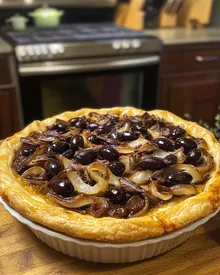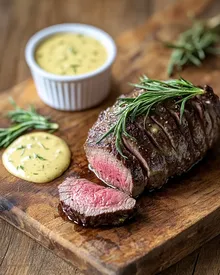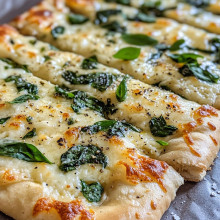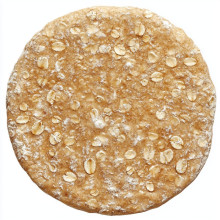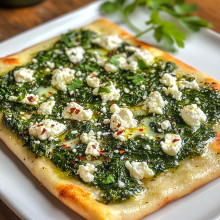Greek Moussaka Made Simple
Published: 29/08/2025 By Bella Owens
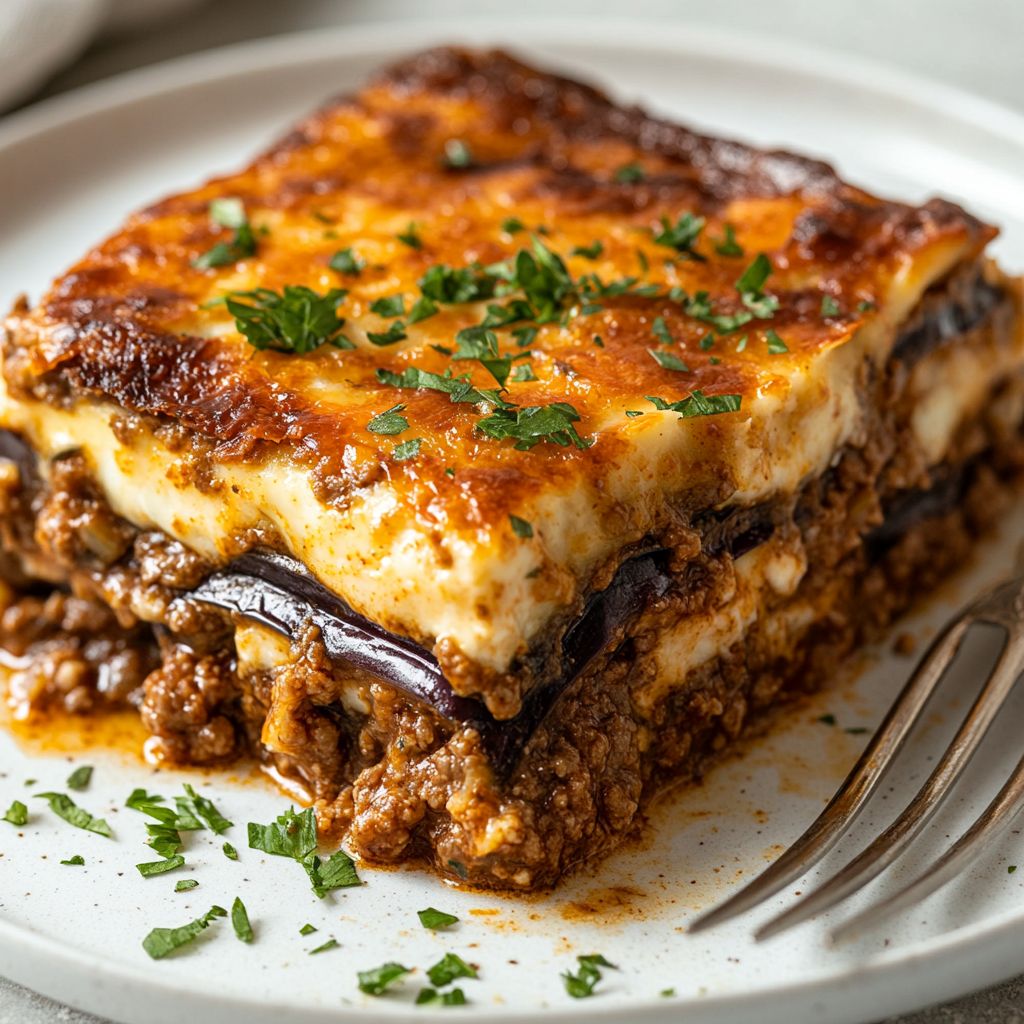
Indulging in the rich tapestry of culinary traditions, Greek Moussaka stands as a timeless emblem of Mediterranean comfort food. This layered wonder is not just a dish; it's a narrative of Greece's vibrant history, showcasing the perfect marriage of flavor and texture. Made simple for home cooks and food enthusiasts alike, this version of Moussaka invites you to embark on a gastronomic journey that transcends borders. Picture tender slices of eggplant interspersed with a hearty meat sauce, all slathered in a comforting béchamel that blankets the dish in creamy goodness. It’s a delightful convergence of taste that awakens your palate and warms your soul, making it a memorable centerpiece for any gathering.
The origins of Moussaka date back centuries and are often attributed to the culinary influences of the Ottoman Empire and the Levant. Traditionally, it features an array of ingredients that embody the essence of Greek cooking. Eggplants and potatoes represent the bountiful harvest of the land, while a succulent meat filling typically made from lamb or beef speaks to the heartiness of Greek cuisine. Each region boasts its variations, but the comforting layers of flavors remain a common thread, inviting countless adaptations. By presenting a simplified version, this recipe allows the modern cook to celebrate this classic dish's essence without the steep learning curve often associated with traditional methods.
As you prepare to create this delectable Greek Moussaka, envision the ritualistic unfolding of the cooking process: the sizzling sounds of vegetables meeting heat, the aromatic spices dancing around the room, and the intoxicating scent of baked cheese wafting through the air. Each component is meticulously crafted to ensure both authenticity and ease. You'll quickly notice that while the technique may seem daunting at first glance, it is rewarding and straightforward. Whether you’re hosting a dinner party or enjoying a quiet family meal, Moussaka is the go-to dish that sparks joy and conversation at the table.
At the heart of this Moussaka is its signature ingredient—the eggplant. Rich in flavor and with a robust texture, eggplants are the backbone of this dish. They are sliced, salted, and often baked or sautéed to reduce moisture and enhance their flavor before layering. This process transforms them into tender, flavorful slices that seamlessly merge with the other ingredients, creating a harmonious balance that is a hallmark of Mediterranean cooking.
Following the vibrant layers of eggplant, we introduce a sumptuous meat filling that brings both richness and depth to the Moussaka. Ground meat, typically seasoned with aromatic spices such as cinnamon and nutmeg, infuses the dish with warmth and character. This meat sauce, often with a hint of tomato, provides a savory counterpart to the creamy béchamel—a velvety French sauce that elevates Moussaka to another level of indulgence. With this recipe, you'll master the art of crafting a silky smooth béchamel that forms the crowning glory of each serving.
The beauty of Moussaka lies not only in its sumptuous flavor but also in its aesthetic appeal. As you layer the eggplant, meat sauce, and béchamel, you’re creating a culinary masterpiece that will impress anyone lucky enough to indulge in a serving. The golden-brown top, kissed by the oven's heat, beckons you to dig in. Each slice reveals a composed structure containing the musky earthiness of the eggplant, the savory notes of the meat sauce, and the creamy richness of the béchamel—all working in unison to tantalize the senses.
The final philosophy behind Moussaka is rooted in its communal nature. Sharing a dish that brings together family and friends is at the heart of Greek culture. A baked Moussaka can easily feed a crowd, encouraging laughter, stories, and connection over a shared meal. It's a dish that prompts everyone to gather around the table—making it perfect for festive occasions or simple weeknight dinners alike. With its roots steeped in tradition, this recipe also offers a blank canvas ready to receive your personal culinary touches. Feel free to experiment with the ratios of eggplant to meat or incorporate additional spices that resonate with your personality and taste.
Understanding the components that go into making a Greek Moussaka will enhance your appreciation of this dish. Each element plays a challenging role in crafting a meal that's more than just food; it’s an exploration of history, culture, and a celebration of simplicity. This is what makes the practice of cooking so enriching—discovering the stories behind local ingredients, mastering techniques passed down through generations, and finding your unique voice in the culinary sphere. The comfort of Moussaka is that it doesn’t demand perfection; it encourages exploration and creativity, making it an ideal dish for cooks of all skill levels.
With this Greek Moussaka made simple, you're not just following a recipe; you're participating in a legacy that celebrates the flavors and traditions of Greece. As you prepare this hearty meal, remember that it's about the experience—the vibrant colors that blend together, the dynamic textures that mingle with each bite, and the smiles shared across the table. Let the act of cooking unfold a new chapter of culinary discovery, igniting your passion for creating wonderful meals. As you gather ingredients and begin your journey, keep in mind that the joy of cooking is not just solitary but an opportunity to bring loved ones together through good food and heartfelt conversations.
As the final layer of béchamel is smoothed onto the Moussaka, you can almost taste the anticipation. Baked to golden perfection, this luscious dish will soon come alive with flavors that have been lovingly crafted. The process may seem lengthy, but the rewards are immeasurable. The act of creating each layer, from salty and sweet to rich and creamy, serves as a great reminder of how cooking can nourish not only the body but the spirit. This simple yet authentic iteration of Greek Moussaka encourages you to take a step back, embrace the kitchen, and explore dishes that resonate with history, community, and shared happiness.
As you present each slice to your guests, allow each person at the table to partake in the magic of Moussaka, transforming an ordinary meal into a delightful experience. The flavors tell a story—a love letter to Greek cuisine, a celebration of family gatherings, and an invitation to savor life's cherished moments. Welcome to the world of Moussaka. Your journey is just beginning!
Ingredients
- For the Eggplant Layer
- 2 large eggplants sliced
- Salt for seasoning
- 3 tablespoons olive oil
- For the Meat Sauce
- 1 pound ground beef or lamb
- 1 large onion chopped
- 2 cloves garlic minced
- 1 can (14 oz) diced tomatoes
- 2 tablespoons tomato paste
- 1 teaspoon ground cinnamon
- 1 teaspoon dried oregano
- 1/2 teaspoon salt
- 1/4 teaspoon black pepper
- For the Béchamel Sauce
- 4 tablespoons unsalted butter
- 1/4 cup all-purpose flour
- 2 cups milk
- 2 large eggs beaten
- 1/4 teaspoon nutmeg
- 1/2 teaspoon salt
- 1/2 cup grated Parmesan cheese
- For Assembling
- 1/2 cup grated mozzarella cheese
Instructions
- Begin by slicing the eggplants and seasoning them with salt. Let them sit for about 20 minutes to draw out moisture, then rinse and pat dry with paper towels.
- Preheat your oven to 400°F (200°C).
- In a large skillet, heat 3 tablespoons of olive oil over medium heat. Add the eggplant slices in batches and cook until lightly browned, about 5-7 minutes per side. Set aside on a paper towel-lined plate to absorb excess oil.
- In the same skillet, add the chopped onion and minced garlic. Sauté until the onion becomes translucent, about 5 minutes.
- Add the ground beef or lamb to the skillet, breaking it apart as it cooks. Brown the meat until fully cooked through, about 8-10 minutes.
- Stir in the diced tomatoes, tomato paste, ground cinnamon, dried oregano, salt, and black pepper. Simmer for about 10 minutes until the sauce thickens slightly. Remove from heat.
- In a saucepan, melt 4 tablespoons of unsalted butter over medium heat. Stir in the flour and cook for about 1 minute, until bubbly.
- Gradually whisk in the milk, stirring continuously until the sauce thickens and is smooth, about 5-7 minutes.
- Remove the saucepan from heat and whisk in the beaten eggs, nutmeg, and salt. Stir in the grated Parmesan cheese until well combined.
- Now, in a greased baking dish, layer half of the eggplant slices at the bottom. Spread half of the meat sauce over the eggplant.
- Add the remaining eggplant slices on top of the meat sauce, followed by the rest of the meat sauce. Finally, pour the béchamel sauce over the top, spreading it evenly.
- Sprinkle the grated mozzarella cheese over the béchamel sauce for an extra cheesy topping.
- Bake in the preheated oven for 30-35 minutes or until the top is golden and bubbly.
- Allow the moussaka to cool for about 10-15 minutes before serving, to let the layers set.
Notes
These Greek moussaka layers come together beautifully, creating a hearty and comforting dish that's perfect for family gatherings or meal prep. Start by salting the sliced eggplants, allowing them to release moisture and bitterness before sautéing them in olive oil for a rich flavor and tender texture. The meat sauce, filled with aromatic spices like cinnamon and oregano, adds depth, while the béchamel sauce contributes a creamy finish. Make sure to bake it until it’s bubbly and golden on top for that perfect crust. Resting the moussaka after baking allows the flavors to meld and makes for easier slicing. For added freshness, consider serving it with a side of Greek salad or yogurt. This dish can also be made ahead of time and reheated, making it a great option for busy days.
Faq
What is Greek Moussaka?
Greek Moussaka is a traditional casserole dish made with layers of eggplant, minced meat (usually lamb or beef), béchamel sauce, and often potatoes. It's baked until golden and bubbly, making it a comforting and hearty meal.
Can I use potatoes in my Moussaka?
Yes! While some recipes include potatoes, others do not. If you prefer a heartier dish, you can add a layer of thinly sliced potatoes in between the eggplant and meat layers.
Is it necessary to salt the eggplant?
Salting the eggplant helps to draw out moisture and reduce bitterness. It's a common step in many recipes, but if you're short on time, you can skip it, especially if using younger, less bitter eggplants.
Can I make Moussaka ahead of time?
Absolutely! Moussaka can be prepared in advance and refrigerated. You can assemble it a day ahead, refrigerate it, and then bake it before serving. This can enhance the flavors even more!
Is Moussaka gluten-free?
This depends on the ingredients used. Traditional béchamel sauce is made with flour, but you can substitute it with a gluten-free flour or cornstarch to make the dish suitable for those with gluten intolerance.
What kind of meat is best for Moussaka?
Ground lamb is traditional for Moussaka, but you can also use ground beef or a mixture of both. For a vegetarian option, consider substituting with lentils or mushrooms.
How should I store leftover Moussaka?
Leftover Moussaka should be stored in an airtight container in the refrigerator. It can last for about 3-4 days. You can also freeze it for longer storage, but be sure to cover it well.
What can I serve with Moussaka?
Moussaka is often served with a side salad, Tzatziki sauce, or crusty bread. A light Greek salad with tomatoes, cucumber, and feta pairs beautifully with the rich flavors of the Moussaka.
Do you want to save this recipe?
Are you new to this website? This free email series is a great place to start. I'll walk you through some of my most popular recipes and show you how and why they work. You'll learn some practical concepts in the science of baking and quickly gain the knowledge you need to become a better baker.









